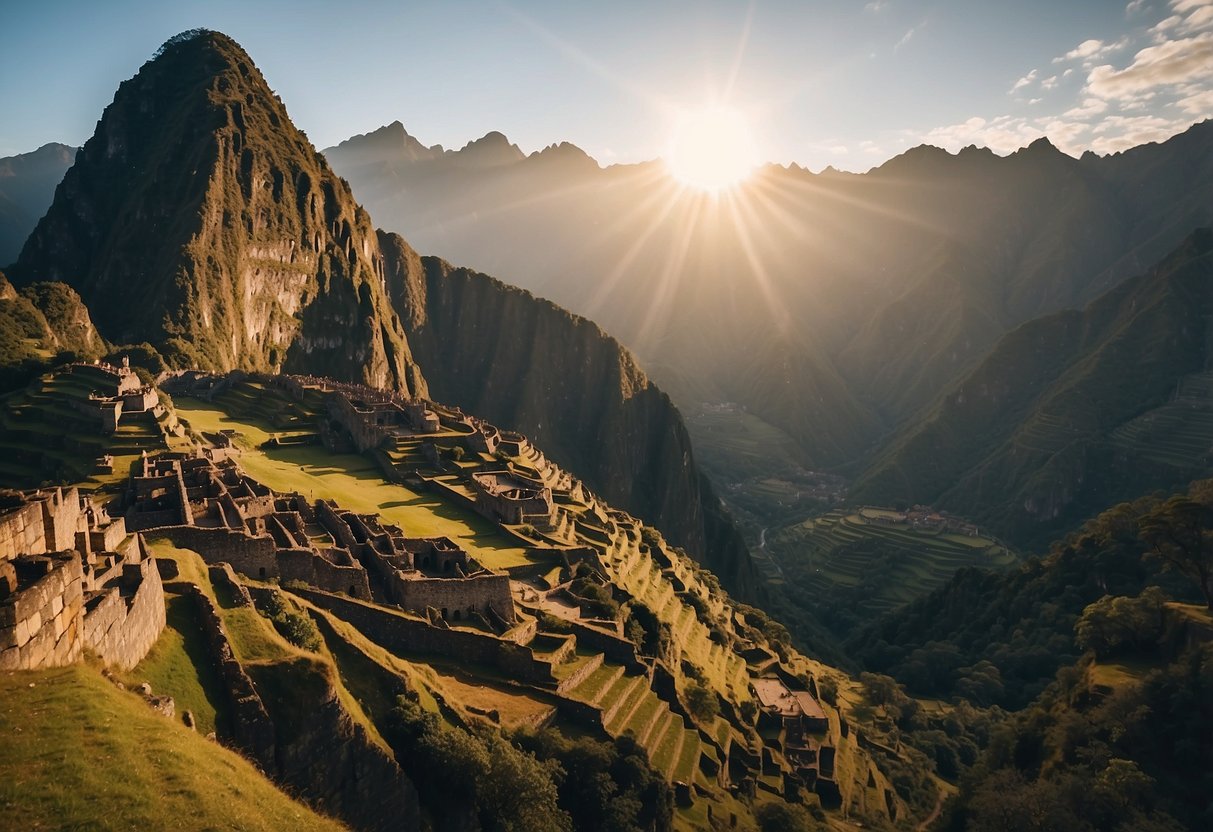
The Splendor of the Citadel
Machu Picchu stands as a testament to the ingenuity and artistry of the Inca civilization. The citadel’s architecture and location impress visitors, while Huayna Picchu offers captivating views for those who dare to climb.
The Iconic Features of Machu Picchu
Machu Picchu, an ancient Inca city, is renowned for its precision stonework and strategic placement amidst lush Andean peaks. Structured as a royal estate, the city includes temples, terraces, and plazas. The Temple of the Sun and the Room of the Three Windows exemplify sophisticated Inca engineering. Additionally, the Intihuatana stone, known as the hitching post of the sun, served both astronomical and ceremonial purposes. The city remained hidden from Spanish invaders, preserving its unique architecture and cultural significance. As a member of the New Seven Wonders of the World, Machu Picchu continues to draw countless visitors who marvel at the seamless integration of natural and built environments.
Exploring Huayna Picchu
Huayna Picchu, the peak often seen in the background of photographs of Machu Picchu, offers an adventurous climb with stunning panoramic views. Rising to about 2,720 meters, the trail presents a challenging yet rewarding experience. Terraces and small ruins along the path showcase the Inca’s adaptability to rugged terrain. From the top, one can see the entirety of the citadel, the meandering Urubamba River, and distant Andean peaks. Hikers should book permits in advance due to limited daily admissions. The ascent not only highlights the natural beauty surrounding the ancient city but also provides insight into the strategic advantages of Machu Picchu’s location.
Flora and Fauna around Machu Picchu
Machu Picchu is positioned in a unique ecological zone, offering a rich variety of plant species and abundant wildlife. The lush surroundings are home to diverse vegetation and animal life, making the visit even more captivating.
Native Plant Species
The flora surrounding Machu Picchu includes a diverse mix of native plants that thrive in its subtropical climate. Orchids are particularly significant, with over 300 species found in the region. These vibrant flowers add color to the landscape and are in bloom year-round. Visitors can also observe Polylepis forests, unique high-altitude trees known for their papery bark.
Other notable plants include ferns and bromeliads, which can be seen along the hiking trails. The area’s flora supports the natural beauty and biodiversity integral to the Peruvian jungle experience. Traditional crops such as quinoa and corn are also cultivated in terraces nearby, adding to the cultural heritage of the site.
Wildlife in the Peruvian Jungle
The wildlife in the Peruvian jungle around Machu Picchu is equally diverse. Llamas and alpacas are common sights, often seen grazing on the ancient terraces. These animals have been part of Andean culture for centuries and continue to thrive in this environment.
Bird enthusiasts will be delighted with species like the Andean condor and the vividly colored cock-of-the-rock. Small mammals, including the Andean fox and spectacled bear, roam the forests. Additionally, the region is home to various insects and reptiles, contributing to its rich biodiversity.
The presence of guinea pigs, both in the wild and as part of local cuisine, adds another layer to the area’s cultural and ecological tapestry. Visitors are encouraged to explore responsibly, appreciating the intricate balance of this ecosystem.